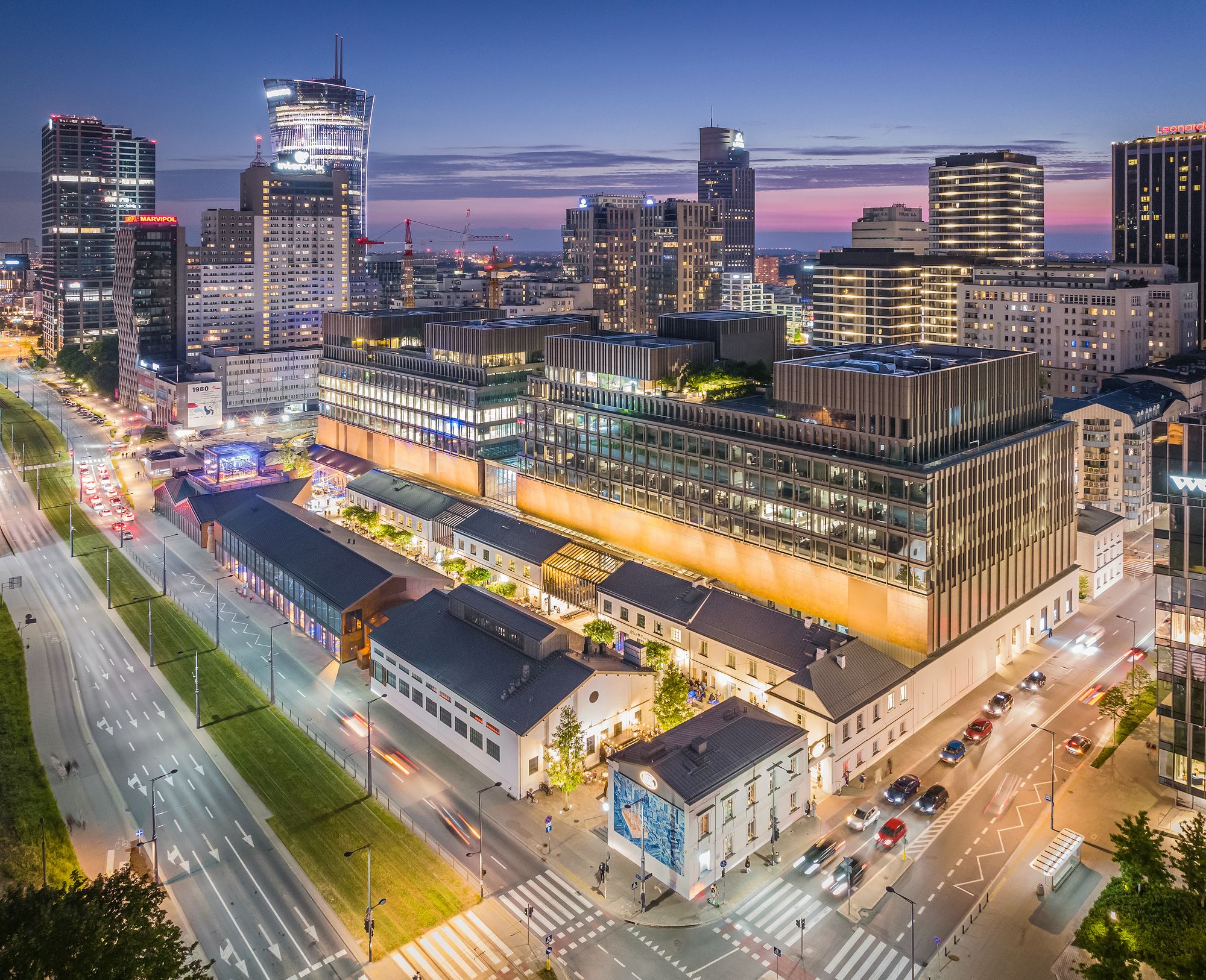A guardian of values and history, a sustainable, conceptual brownfield project—this is the Norblin Factory, or Fabryka Norblina in Polish. Hype&Hyper brings you the story of Warsaw’s newest attraction, a space full of adventure.
Adventurous history
The history of the factory began at the end of the 18th century when the land was purchased by Franciszek Ryx, butler and trusted man of the last king of Poland, Stanisław August Poniatowski. Villas with two outbuildings were built and an English-style garden was established, fashionable at the time.In the early 1850s, the site was acquired by two entrepreneurs, Edward Luckfield and Gustaw Henniger, running a business under the name Henniger and Company. They added a factory house to the Ryx residential building on the east-west axis. There, they began to produce silver-plated and imitation silver metalwork. In 1859, the factory house was bought by the St. Petersburg company founded in 1809 by the Buch brothers who moved their production of metal haberdashery using plating and electroplating methods and products made from what was known as new silver, here. The Buchs were well-known all over the Russian Empire not only for their civilian but their military production as well. In 1882, the “Buch Brothers” brand was sold to Norblin & Company run by Ludwik Norblin, his sister Albertyna, and her husband Teodor Werner.
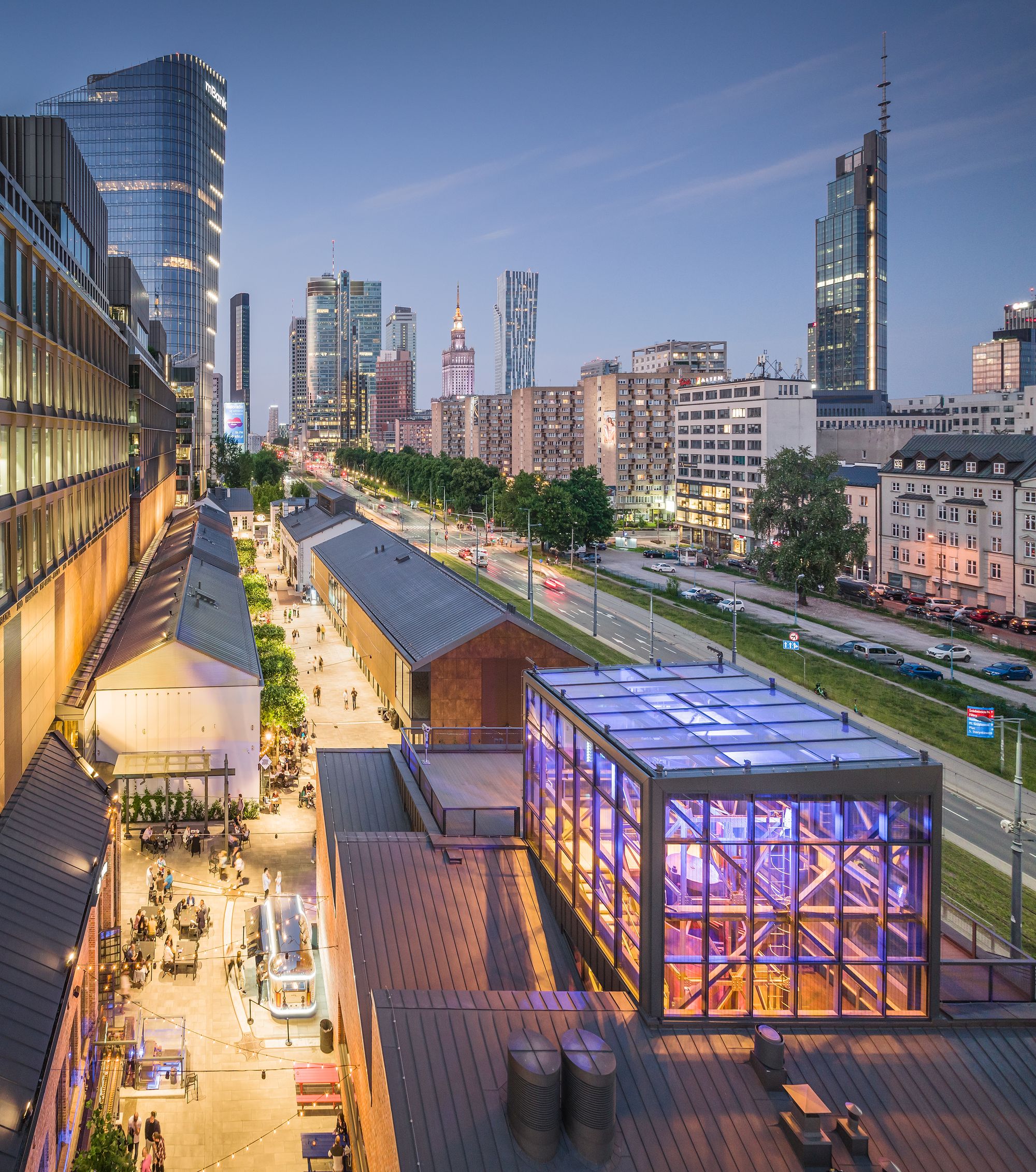
The Norblins and the Werners arrived in pre-partition Poland from France and Germany at the turn of the 18th and 19th centuries. In 1892, they began to operate their business under the name Norblin, Buch Brothers, and T. Werner, which became the full name of the factory located at Żelazna Street. The new owners renovated, rebuilt, and expanded the factory building. Before World War I, thanks to Stanisław Norblin, the long-standing technical director of the factory, the production profile changed from haberdashery to specialized prefabricated products: wires, rods, sections, seamless tubes, as well as sheet metal. World War I hit the factory hard. Employees and some of the machinery were evacuated into Russia in 1914, and not everyone returned.

The 1920s and 1930s were a period of development for the factory. New halls were built on the site to accommodate newly imported machinery: a 520T press hall, a drawing mill hall, an ammunition production hall, and the rolling mill hall were also expanded. The production focused on specialized prefabricated products, including ammunition shells for Mauser rifles and model 35 anti-tank rifles. In the early 1930s, the factory was to be moved to a new, promising location in the village of Głowno-Osiny.
However, those plans were thwarted by the outbreak of World War II. In September 1939, the main factory house and parts of the ammunition hall were destroyed in the war. The year 1944 and the Warsaw Uprising brought further destruction, including the complete demolition of the ammunition production halls, the division of the first factory house, and the split of the rolling mill halls into two parts.
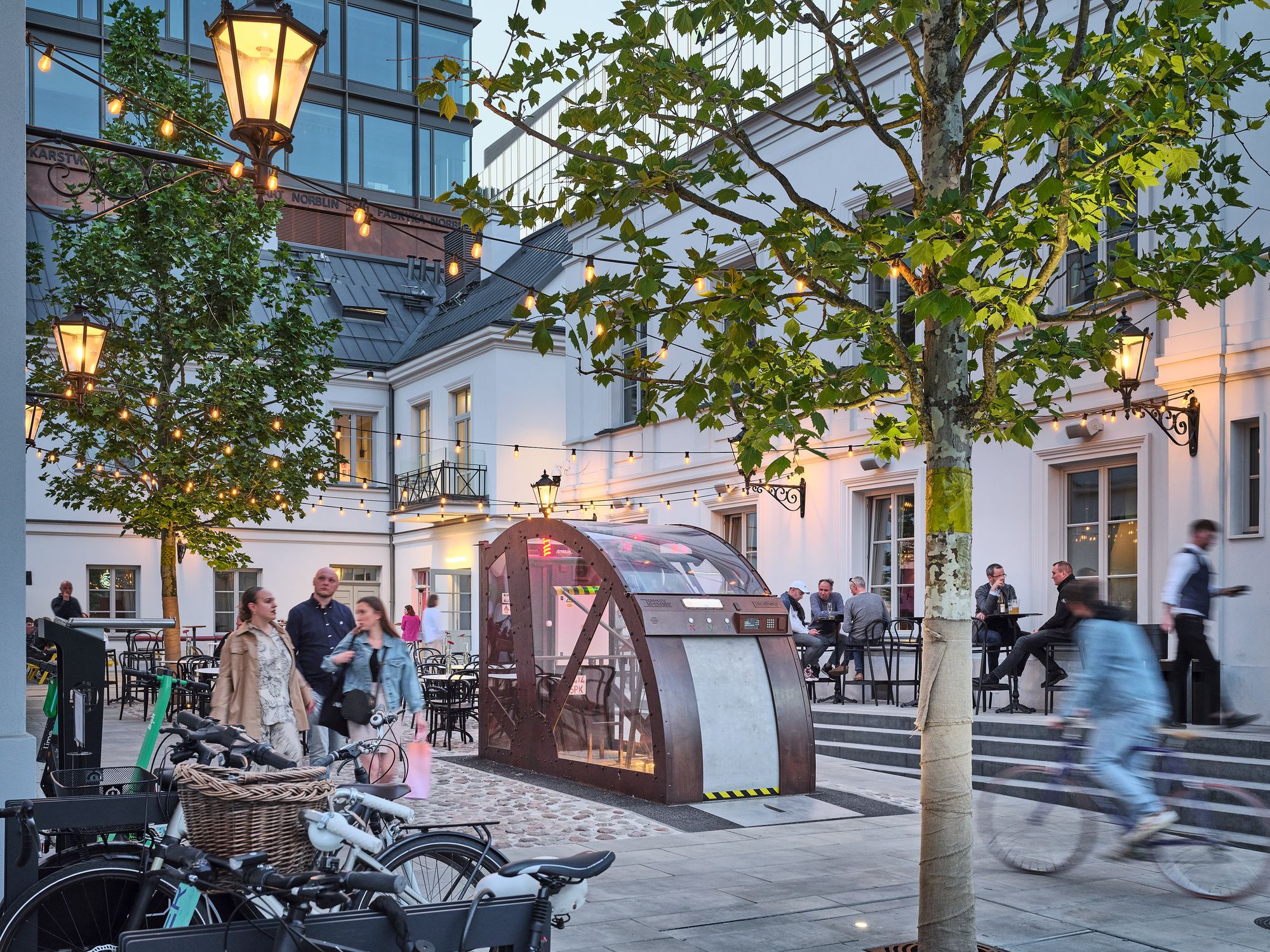

After the war, the workers decided to rebuild the former factories as a grassroots initiative, but the work was not organized enough and provided a pretext for final demolition. The effort involved the pre-war management of the factory: director Henryk Zabłocki and pre-war factory owner Wacław Werner, who had been stripped of their right to manage the factory by the German occupiers back in 1939. The factory was nationalized, and its name was changed to Walcownia Metali “Warszawa” (Metal Rolling Mill). In the early 1960s, an entire row of social, residential, and ancillary buildings was demolished, including parts of the administrative building. The “Warszawa” Metal Rolling Mill operated until 1982.
Between 1982 and 1984, the factory buildings together with their equipment became historical monuments: nine buildings and 42 pieces of machinery and equipment.
Preparatory work for the redevelopment of the former Norblin factory began in 2009. The project was undertaken by the new owner of the site, the Capital Park Group. Between 2011 and 2021, the factory underwent revitalization with conservation and restoration work on all the buildings listed in the register and records of historical monuments as well as other valuable elements. The design and architectural supervision of the work were handled by the PRC Architekci studio.
Brownfield investment along values
Norblin Factory is the flagship project of the Capital Park Group. The factory with a history spanning over two centuries represents a historical building integrated with modern architecture. The multifunctional complex is over 65.000 sqm, including 41.000 sqm. A+ offices and 24.000 sqm of unique entertainment, culture, food, service, and retail facilities.
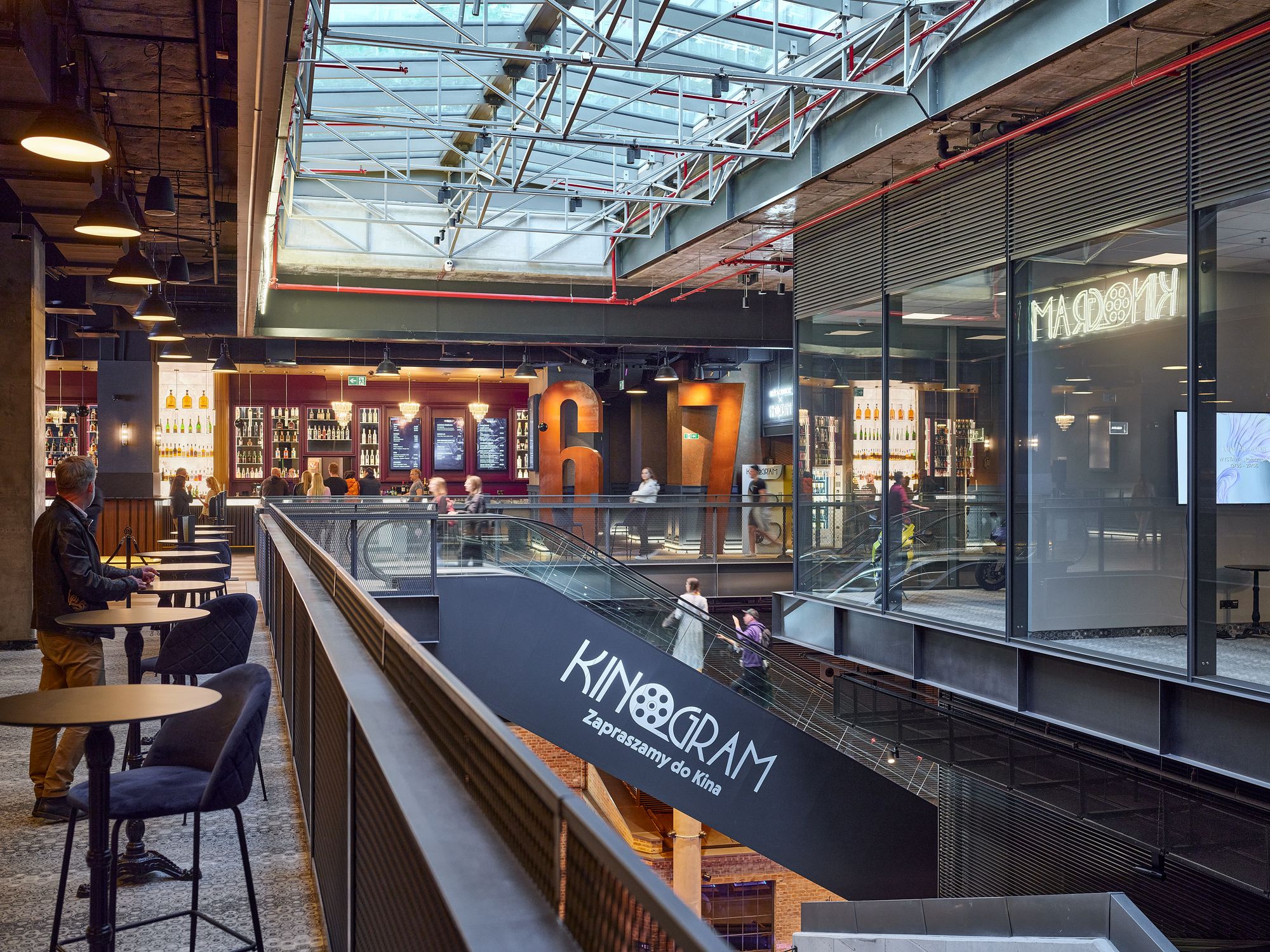
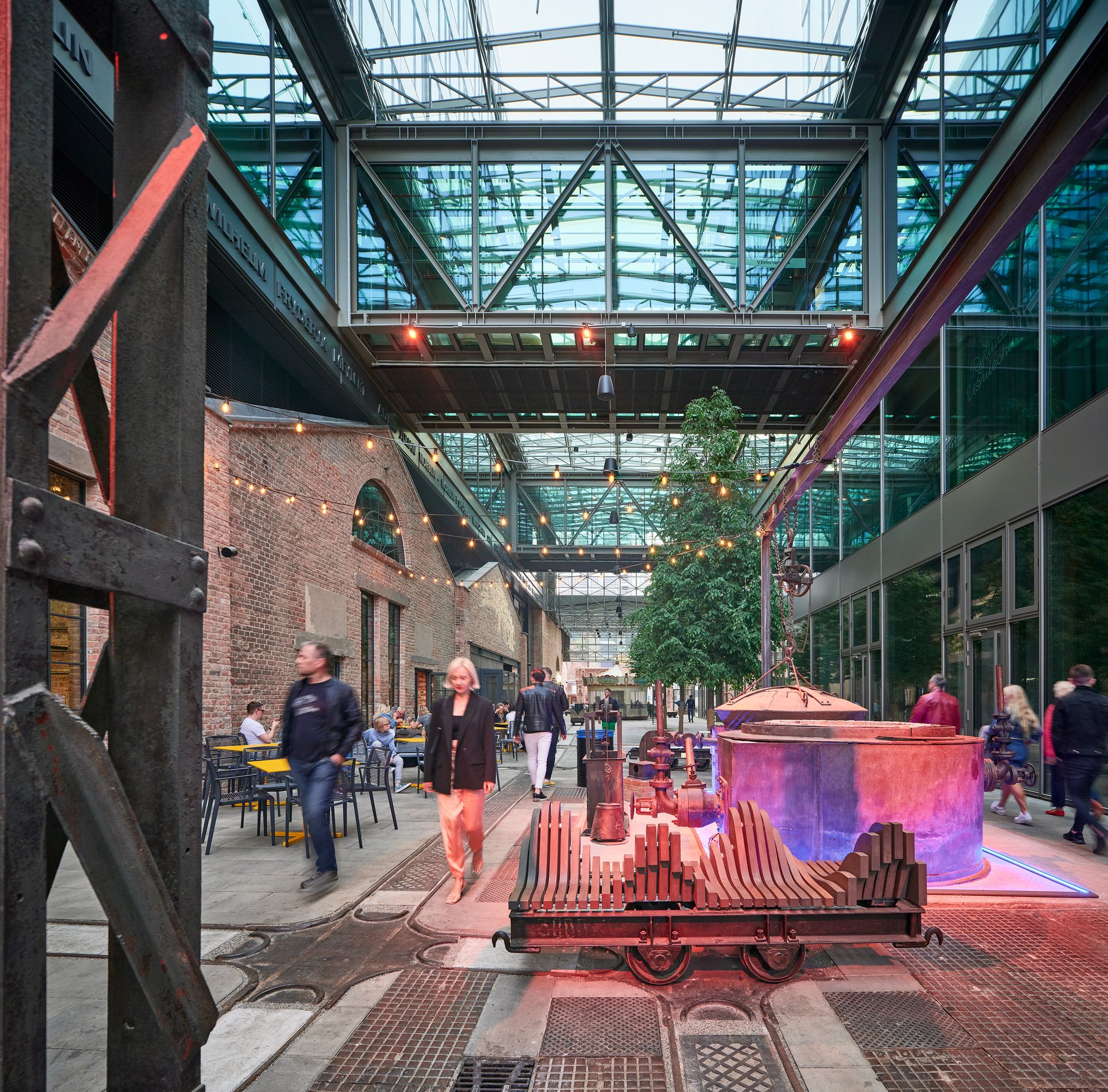
My personal favorite is the unique boutique cinema, KinoGram offering cozy screening rooms with high-class furniture, truffle popcorn, and the only Moët & Chandon champagne machine in Central Europe. If you want to be healthy, Bio Bazar is your place—Poland’s first market with certified organic products. The Norblin Factory is also home to Warsaw’s largest restaurant area, Food Town comprising five historic halls and 23 restaurants serving dishes from all over the world—personally, I always go for a pilaf from Uzbekistan, but Japanese sushi, Ukrainian borsch, and great Philadelphia steak sandwiches are also available. The cocktail bars are excellent, and even during peak hours, the service is impeccable. My go-to choice is the New York Sour—the perfect combination of lemon juice, sugar, egg whites, whiskey, and red wine. The building complex also features an atmospheric Piano Bar located in one of the oldest buildings dating back to the XVIII. century, as well as a museum about the factory itself. In addition, you can find the first digital and immersive art gallery in Poland, the Art Box Experience, and the Apple Museum with the largest collection of Apple products in Europe.
What is even more fantastic is the transmission of culture and values, because the Norblin Factory is not simply a brownfield investment, but a complex, value-based project. As a tribute to the Norblins’ cultural legacy, the Norblin Factory Foundation promotes young talented artists. The Foundation supports various branches of art including film, music, and design.
continue reading in H&H issue no. 6!
ORDER HERE
Emotions meet geometry | Best architecture projects of 2022

Our favorites this year | Best interiors of 2022










